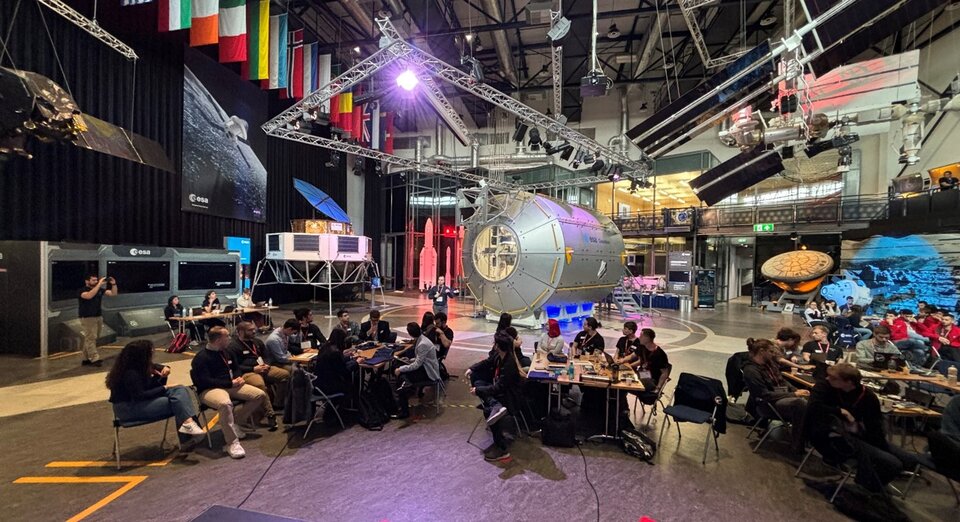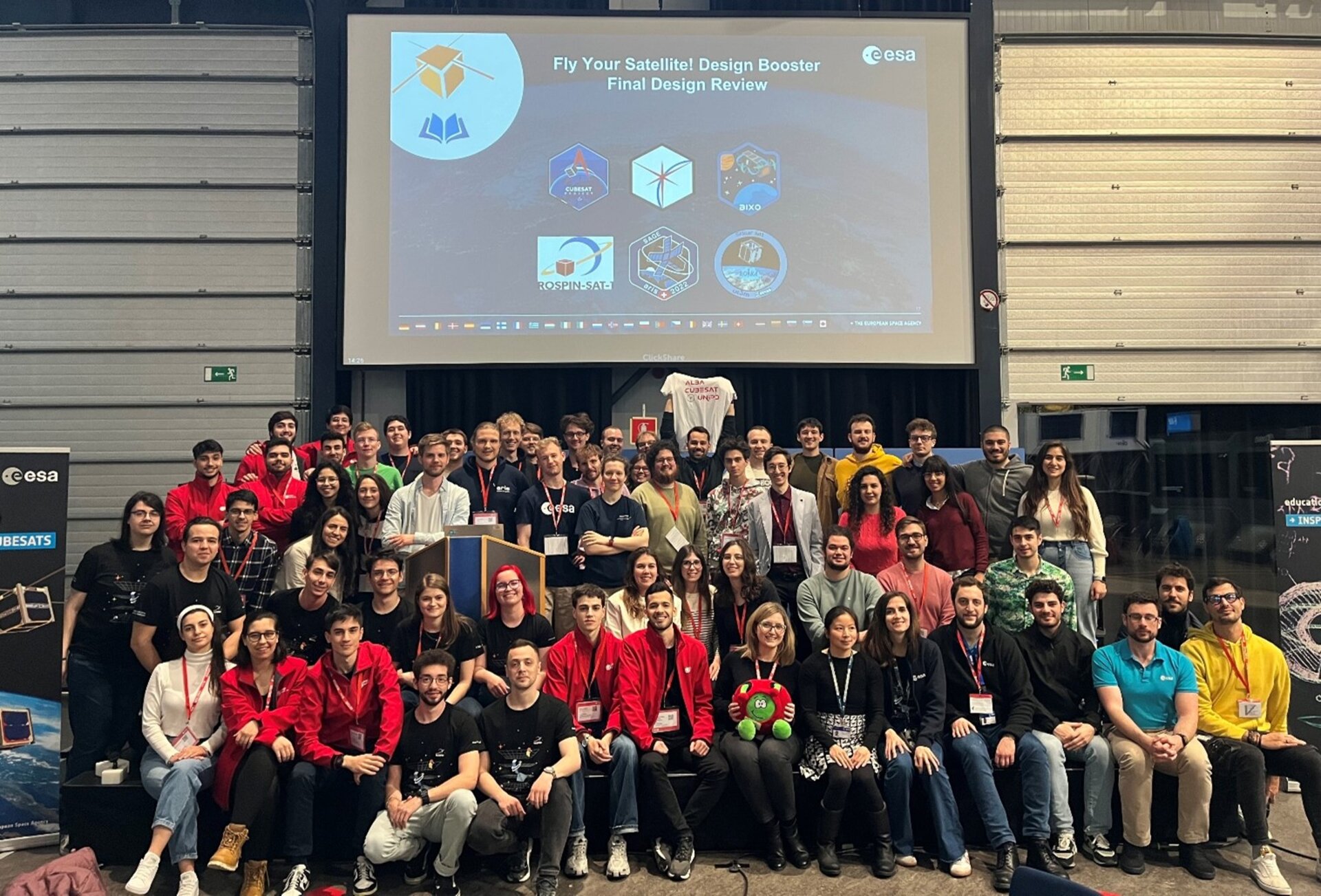Student teams travel to ESTEC for the Final Design Review of their satellites
The Fly Your Satellite! Design Booster pilot edition is slowly coming to an end. For this occasion, a second to last and crucial stage awaited all the teams at ESTEC, the technical heart of ESA.

Over the past year and a half, over 200 students from six university CubeSat teams across Europe have been guided by the expertise and support of ESA Academy and ESA Technical Experts to improve the design of their CubeSat as part of Fly Your Satellite! Design Booster. From the shores of Italy to the peaks of Switzerland, some members of these student teams had the opportunity to join the Final Design Review colocations with ESA Experts to assess the state of their design and discuss their open issues.
As the Final Design Review (FDR) concludes at ESTEC, it is important to emphasize the important role this review has played both for students and in shaping what the future of this pilot edition will be. While the Baseline Design Review (BDR) marked the beginning of the journey towards a better design, the FDR stands as a proof of the remarkable progress made by the participating CubeSat teams! At the heart of this last review lies an in-depth analysis of the CubeSat Project File by ESA Experts, an indispensable document summarizing the essence of each team mission, concept of operation, and design approach. But the FDR data package is more than just one report, orbiting around it are dozens of analysis reports for several subsystems, datasheets and CAD models. From system architecture to testing plan, every angle of the project was subjected to examination and improvements throughout the programme.
Prior to the colocation, ESA experts carefully reviewed this documentation, offering invaluable insights and feedback to ensure the alignment of the design with space standards and best practices. Every point flagged during this process is known as a Review Item Discrepancy (RID), a catalyst for dialogue, refinement, and continuous improvement. "After spending so much time focused on our particular design, getting to review it with external advisors and students, and exploring other teams projects was both refreshing and greatly enlightening!". As teams gathered to the colocation to address those RIDs and extract actions to be taken, they are now ready to embark on the next phase of their journey with confidence, competence, and, as always, an unwavering commitment to excellence.
Next and final stage: the program will come to a fitting end with the final presentation of each project! Each team will have the opportunity to present to all other participating students the problems they have encountered, the solutions they came with, the lessons learned and, most importantly, the new design they have achieved after a year and a half of refinement.
"The ESA Fly Your Satellite! Design Booster is a great opportunity for student teams with little experience in CubeSat design to actually learn and grow as a team - but also personally! I enjoyed being part if this adventure and I can only hope future generations will have the same luck as we did".
Let's take together Education to infinity and beyond!
To learn more about Fly Your Satellite! programmes, click here.


